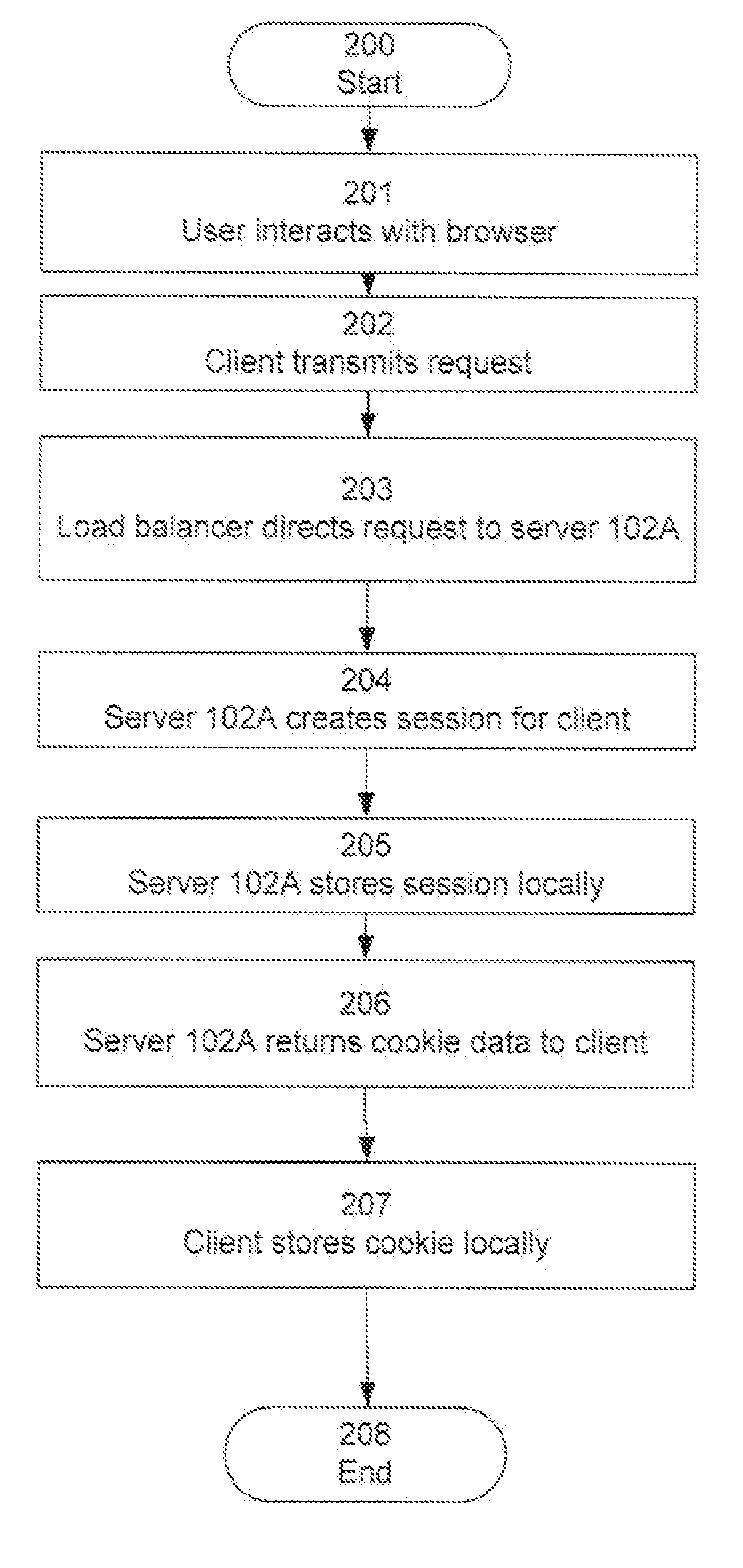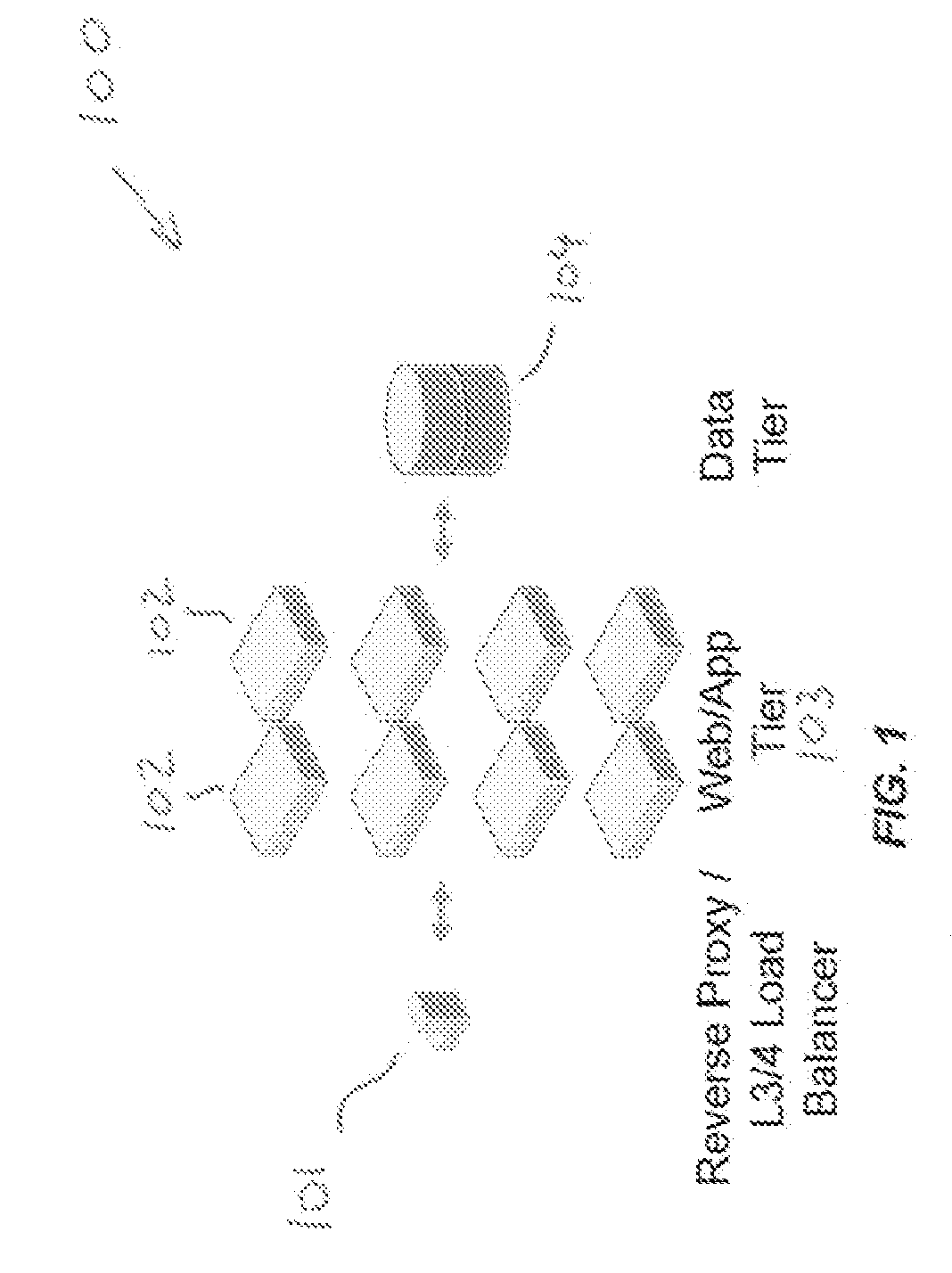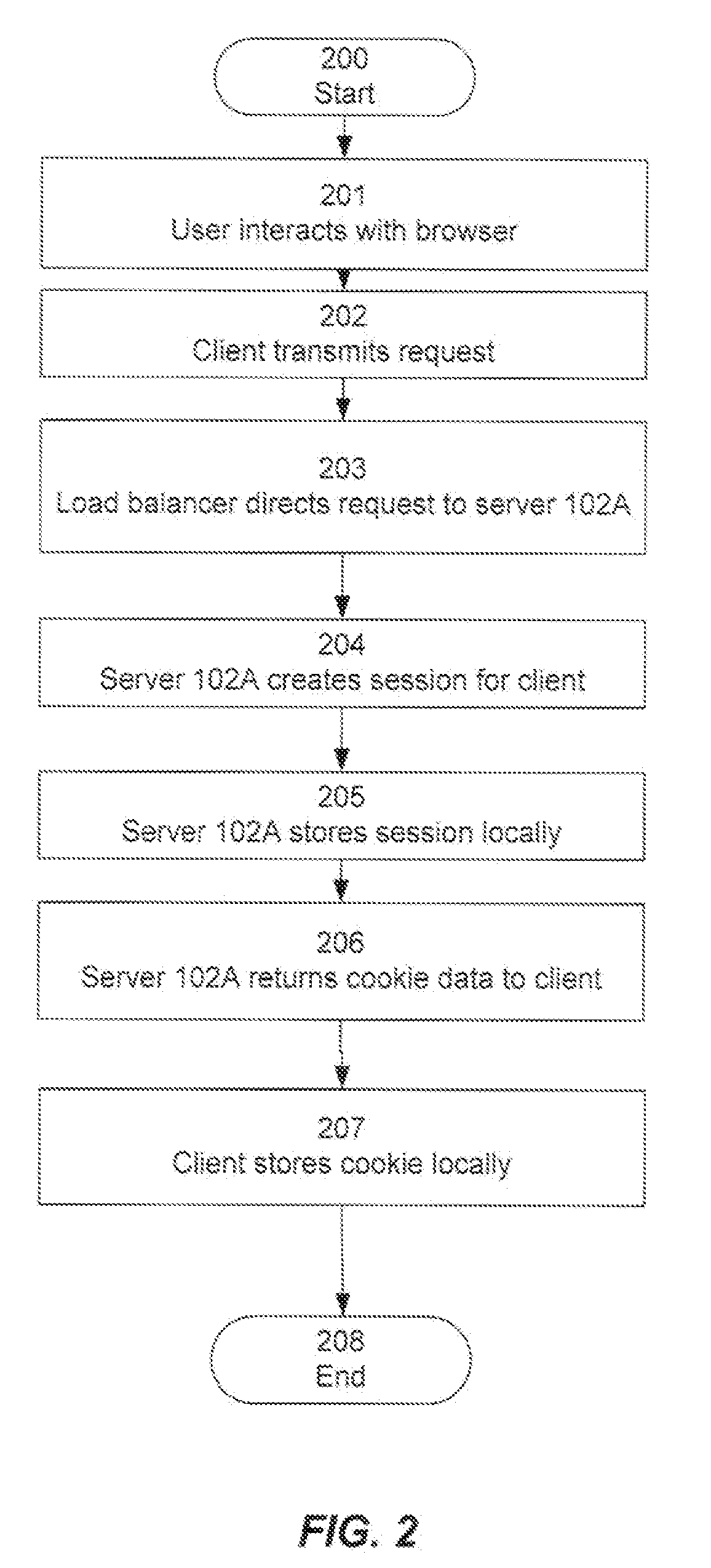Distributed and Replicated Sessions on Computing Grids
a computing grid and distributed replication technology, applied in computing, digital computers, instruments, etc., can solve the problems of increasing the cost introducing significant additional overhead, and a single server becoming a bottleneck, so as to avoid additional time and hardware complexity of a sticky router, reduce the cost of retrieving a session from a peer, and reduce the cos
- Summary
- Abstract
- Description
- Claims
- Application Information
AI Technical Summary
Benefits of technology
Problems solved by technology
Method used
Image
Examples
Embodiment Construction
[0037] In one embodiment, the present invention is implemented in a computing grid, as a mechanism for implementing distributed and replicated sessions on computing grids. For purposes of the following description, the term “grid” is defined as a cluster of machines. One skilled in the art will recognize that the present invention can be implemented in any multiple-server environment where it is desirable to preserve state information for a computing session.
[0038] The terms “session”, “state”, “conversational state”, “state data”, “state information”, and “session state” are used interchangeably in this patent application.
[0039] Referring now to FIG. 1, there is shown an example of a grid architecture for implementing the present invention. Load balancer 101 is a level three and / or level four load balancer that distributes requests among servers 102 in the web / application tier 103 of grid 100. In one embodiment, load balancer 101 includes a reverse proxy. A reverse proxy allows a...
PUM
 Login to View More
Login to View More Abstract
Description
Claims
Application Information
 Login to View More
Login to View More - R&D
- Intellectual Property
- Life Sciences
- Materials
- Tech Scout
- Unparalleled Data Quality
- Higher Quality Content
- 60% Fewer Hallucinations
Browse by: Latest US Patents, China's latest patents, Technical Efficacy Thesaurus, Application Domain, Technology Topic, Popular Technical Reports.
© 2025 PatSnap. All rights reserved.Legal|Privacy policy|Modern Slavery Act Transparency Statement|Sitemap|About US| Contact US: help@patsnap.com



